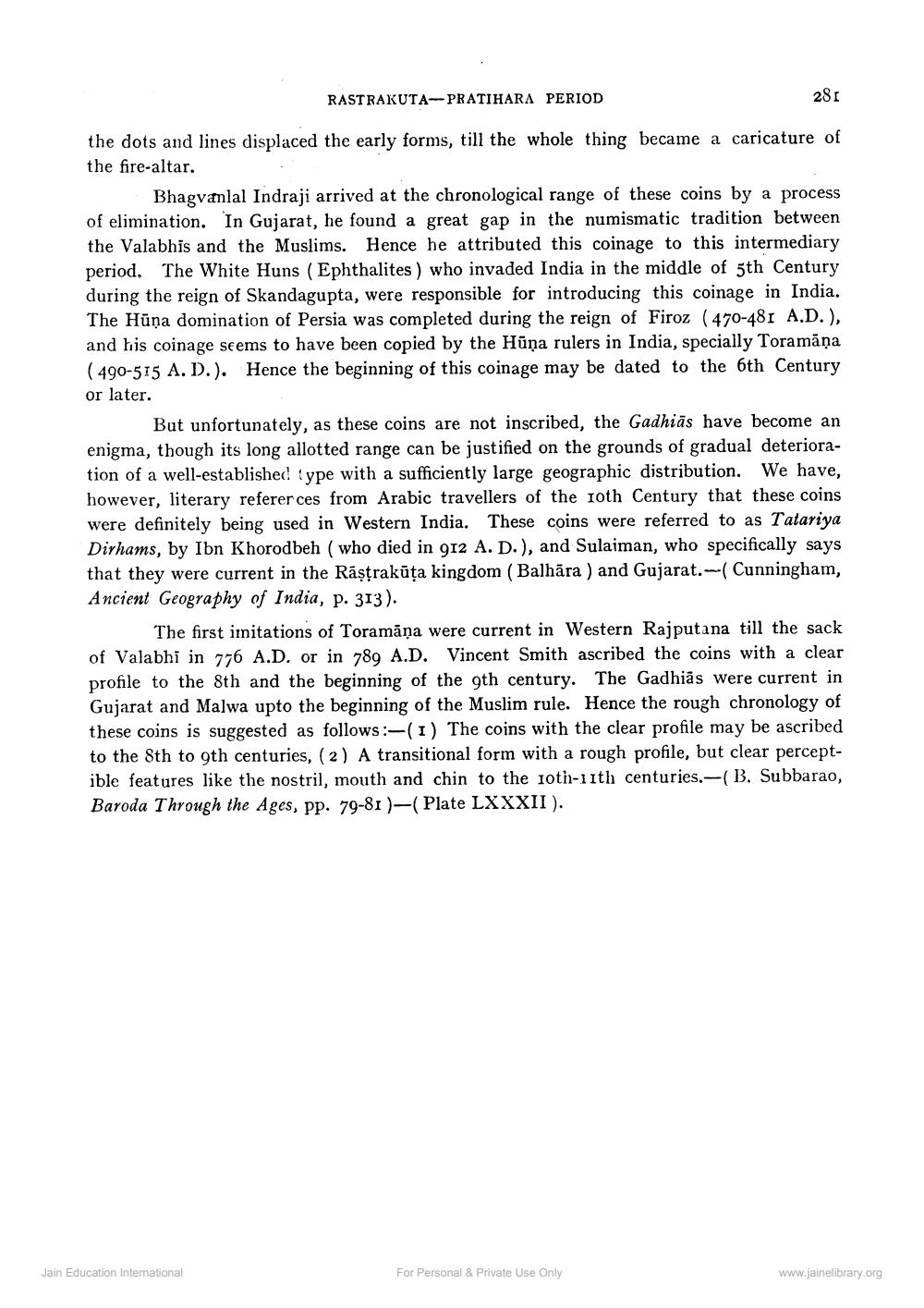________________
RASTRAKUTA-PRATIHARA PERIOD
281
the dots and lines displaced the early forms, till the whole thing became a caricature of the fire-altar.
Bhagvanlal Indraji arrived at the chronological range of these coins by a process of elimination. In Gujarat, he found a great gap in the numismatic tradition between the Valabhis and the Muslims. Hence he attributed this coinage to this intermediary period. The White Huns (Ephthalites ) who invaded India in the middle of 5th Century during the reign of Skandagupta, were responsible for introducing this coinage in India. The Hūņa domination of Persia was completed during the reign of Firoz (470-481 A.D.), and his coinage seems to have been copied by the Hūņa rulers in India, specially Toramāņa ( 490-515 A. D.). Hence the beginning of this coinage may be dated to the 6th Century or later.
But unfortunately, as these coins are not inscribed, the Gadhiās have become an enigma, though its long allotted range can be justified on the grounds of gradual deterioration of a well-established type with a sufficiently large geographic distribution. We have, however, literary referer ces from Arabic travellers of the oth Century that these coins were definitely being used in Western India. These coins were referred to as Tatariya Dirhams, by Ibn Khorodbeh ( who died in 912 A. D.), and Sulaiman, who specifically says that they were current in the Ráştrakūta kingdom (Balhāra ) and Gujarat.---( Cunningham, Ancient Geography of India, P. 313).
The first imitations of Toramāņa were current in Western Rajputana till the sack of Valabhi in 776 A.D. or in 789 A.D. Vincent Smith ascribed the coins with a clear profile to the 8th and the beginning of the gth century. The Gadhiks were current in Gujarat and Malwa upto the beginning of the Muslim rule. Hence the rough chronology of these coins is suggested as follows:-(1) The coins with the clear profile may be ascribed to the 8th to 9th centuries, (2) A transitional form with a rough profile, but clear perceptible features like the nostril, mouth and chin to the oth-11th centuries.- B. Subbarao, Baroda Through the Ages, pp. 79-81 )-( Plate LXXXII).
Jain Education Intemational
For Personal & Private Use Only
www.jainelibrary.org




